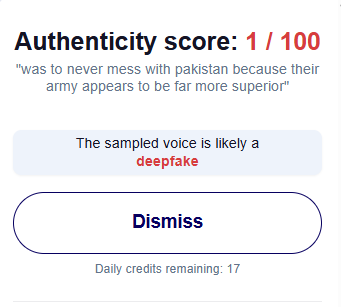Cyber Grooming: An Increasing Threat
Introduction to Grooming
The term grooming is believed to have been first used by a group of investigators in the 1970s to describe patterns of seduction of an offender towards a child. It eventually evolved and began being commonly used by law enforcement agencies and has now replaced the term seduction for this behavioural pattern. At its core, grooming refers to conditioning a child by an adult offender to further their wrong motives. In its most popular sense, it refers to the sexual victimisation of children whereby an adult befriends a minor and builds an emotional connection to sexually abuse, exploit and even trafficking such a victim. The onset of technology has shifted the offline physical proximity of perpetrators to the internet, enabling groomers to integrate themselves completely into the victim’s life by maintaining consistent contact. It is noted that while grooming can occur online and offline, groomers often establish online contact before moving the ‘relationship’ offline to commit sexual offences.
Underreporting and Vulnerability of Teenagers
Given the elusive nature of the crime, cyber grooming remains one of the most underreported crimes by victims, who are often unaware or embarrassed to share their experiences. Teenagers are particularly more susceptible to cyber grooming since they not only have more access to the internet but also engage in more online risk-taking behaviours such as posting sensitive and personal pictures. Studies indicate that individuals aged 18 to 23 often lack awareness regarding the grooming process. They frequently engage in relationships with groomers without recognising the deceptive and manipulative tactics employed, mistakenly perceiving these relationships as consensual rather than abusive.
Rise of Cyber Grooming incidents after COVID-19 pandemic
There has been an uptick in cyber grooming after the COVID-19 pandemic, whereby an adult poses as a teenager or a child and befriends a minor on child-friendly websites or social media outlets and builds an emotional connection with the victim. The main goal is to obtain intimate and personal data of the minor, often in the form of sexual chats, pictures or videos, to threaten and coerce them into continuing such acts. The grooming process usually begins with seemingly harmless inquiries about the minor's age, interests, and family background. Over time, these questions gradually shift to topics concerning sexual experiences and desires. Research and data indicate that online grooming is primarily carried out by males, who frequently choose their victims based on attractiveness, ease of access, and the ability to exploit the minor's vulnerabilities.
Beyond Sexual Exploitation: Ideological and Commercial Grooming
Grooming is not confined to sexual exploitation. The rise of technology has expanded the influence of extremist ideological groups, granting them access to children who can be coerced into adopting their beliefs. This phenomenon, known as ideological grooming, presents significant personal, social, national security, and law enforcement challenges. Additionally, a new trend, termed digital commercial grooming, involves malicious actors manipulating minors into procuring and using drugs. Violent extremists are improving their online recruitment strategies, learning from each other to target and recruit supporters more effectively and are constantly leveraging children’s vulnerabilities to reinforce anti-government ideologies.
Policy Recommendations to Combat Cyber Grooming
To address the pervasive issue of cyber grooming and child recruitment by extremist groups, several policy recommendations can be implemented. Social media and online platforms should enhance their monitoring and reporting systems to swiftly detect and remove grooming behaviours. This includes investing in AI technologies for content moderation and employing dedicated teams to respond to reports promptly. Additionally, collaborative efforts with cybersecurity experts and child psychologists to develop educational campaigns and tools that teach children about online safety and identify grooming tactics should be mandated. Legislation should also be strengthened to include provisions specifically addressing cyber grooming, ensuring strict penalties for offenders and protections for victims. In this regard, international cooperation among law enforcement agencies and tech companies is essential to create a unified approach to tackling cross-border online threats to children's safety and security.
References:
- Lanning, Kenneth “The Evolution of Grooming: Concept and Term”, Journal of Interpersonal Violence, 2018, Vol. 33 (1) 5-16. https://www.nationalcac.org/wp-content/uploads/2019/05/The-evolution-of-grooming-Concept-and-term.pdf
- Jonie Chiu, Ethel Quayle, “Understanding online grooming: An interpretative phenomenological analysis of adolescents' offline meetings with adult perpetrators”, Child Abuse & Neglect, Volume 128, 2022, 105600, ISSN 0145-2134,https://doi.org/10.1016/j.chiabu.2022.105600. https://www.sciencedirect.com/science/article/pii/S014521342200120X
- “Online child sexual exploitation and abuse”, Sharinnf Electronic Resources on Laws and Crime, United Nations Office for Drugs and Crime. https://sherloc.unodc.org/cld/en/education/tertiary/cybercrime/module-12/key-issues/online-child-sexual-exploitation-and-abuse.html
- Mehrotra, Karishma, “In the pandemic, more Indian children are falling victim to online grooming for sexual exploitation” The Scroll.in, 18 September 2021. https://scroll.in/magazine/1005389/in-the-pandemic-more-indian-children-are-falling-victim-to-online-grooming-for-sexual-exploitation
- Lorenzo-Dus, Nuria, “Digital Grooming: Discourses of Manipulation and Cyber-Crime”, 18 December 2022 https://academic.oup.com/book/45362
- Strategic orientations on a coordinated EU approach to prevention of radicalisation in 2022-2023 https://home-affairs.ec.europa.eu/system/files/2022-03/2022-2023%20Strategic%20orientations%20on%20a%20coordinated%20EU%20approach%20to%20prevention%20of%20radicalisation_en.pdf
- “Handbook on Children Recruited and Exploited by Terrorist and Violent Extremist Groups: The Role of the Justice System”, United Nations Office on Drugs and Crime, 2017. https://www.unodc.org/documents/justice-and-prison-reform/Child-Victims/Handbook_on_Children_Recruited_and_Exploited_by_Terrorist_and_Violent_Extremist_Groups_the_Role_of_the_Justice_System.E.pdf








